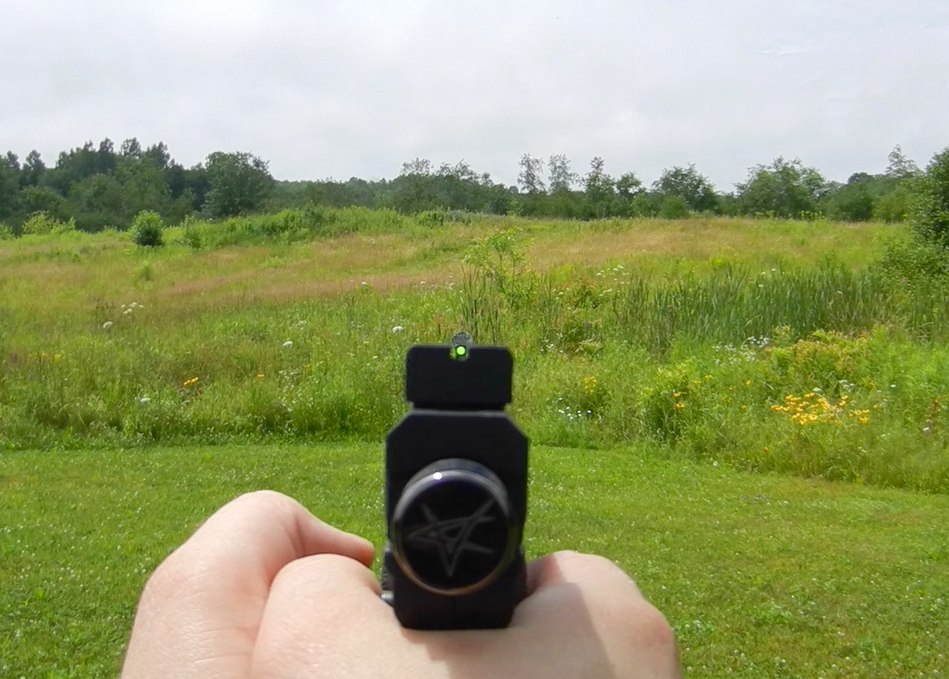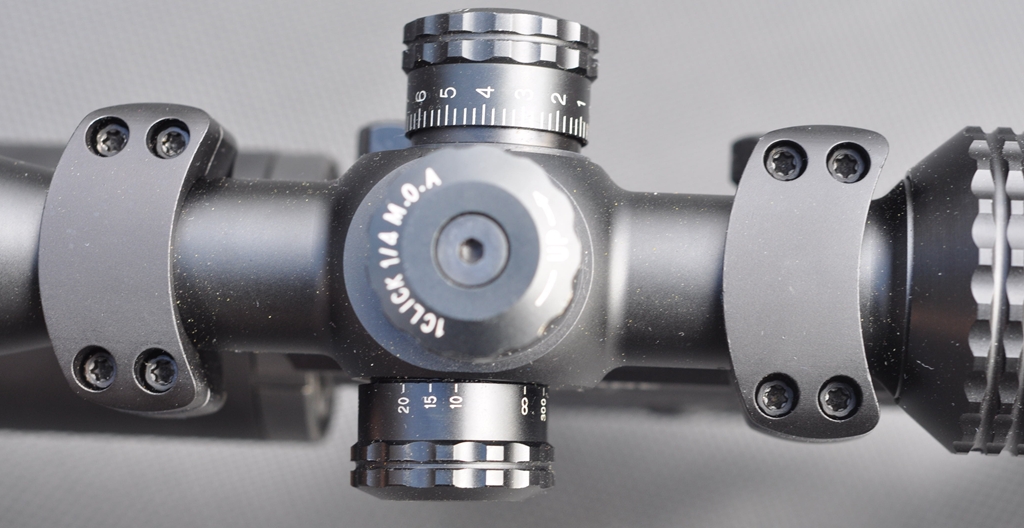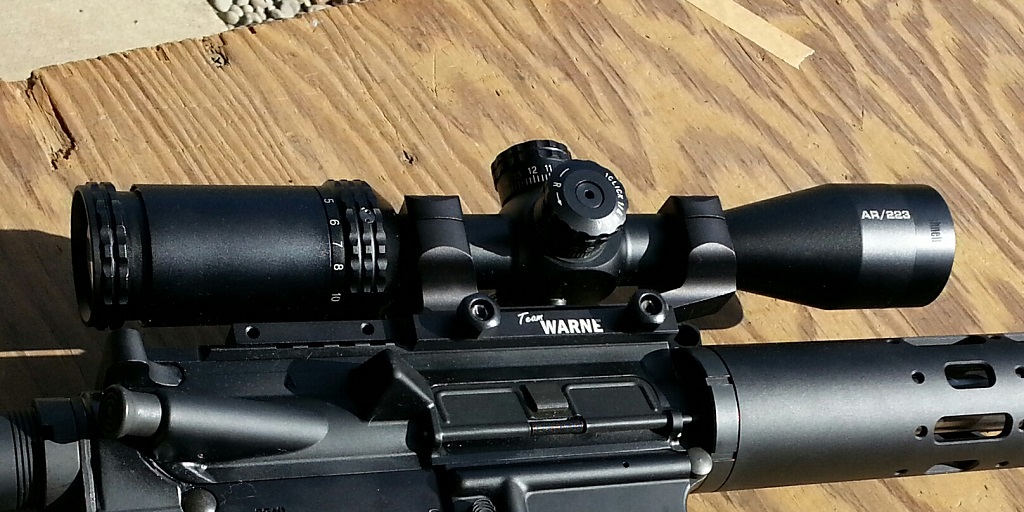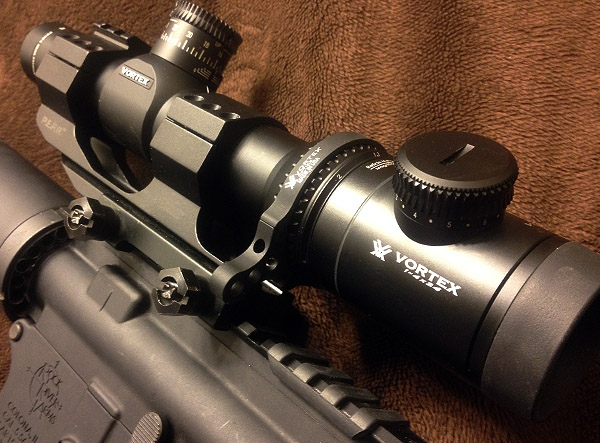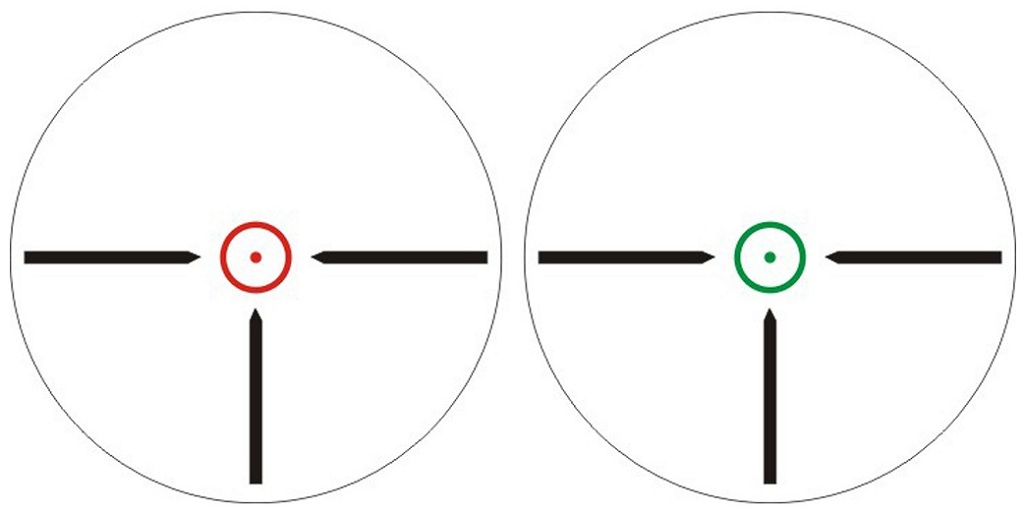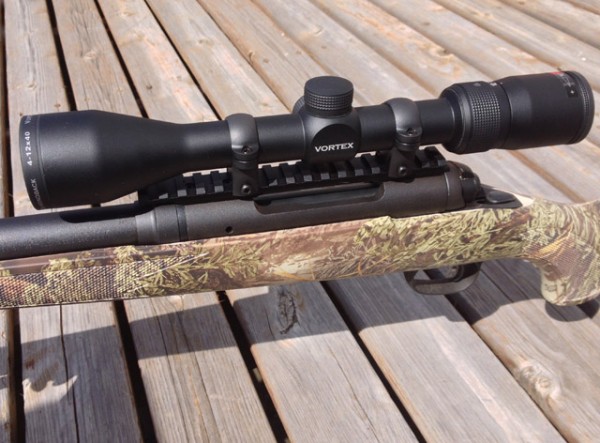
What makes one particular scope more suited for hunting predatory animals than other scopes? Its a valid question. After all, if any given hunting/field scope gives you the ability to hit a deer-sized target at 100 yards, it should be fine for coyotes, right? Well, yes it should. Most hunters will take small game using a rifle/scope setup that is no different then their big game rig or even their range plinker. Any optic could be used for predators, but there are certain unique aspects of this kind of specialized hunting, and a scope can be built around those factors to give an edge to the shooter.

Predator hunting is a lot different than hunting a 'prey animal' in a few ways. Coyotes and Bobcats have keen senses to spot and stalk their own prey, which makes it very hard to stalk them in return. Typically its either 'spot and shoot' or use a caller/decoy to lure them close enough for a shot from a concealed positon. The opportunity for that shot is extremely shorter and quicker than with any other game because of the clever, skittish nature of these animals. Sometimes the coyote will be running along your perimeter at a brisk pace, at range, and that is the only opportunity it will lend you. Or maybe its a bobcat sitting patiently and statuesque at the end of a windy field, defiant to come any closer. Being a great shot and having plenty of luck is preferred, but having a scope specialized for the conditions is what could mean the difference to not taking a shot out of doubt, or splattering the dirt all around the 'ol Wiley as he high tails it into the next county.

The Burris Predator Quest scope is designed to give the predator hunter a better tool for the job. The optic is backed by Les Johnson, a world champion coyote caller who's been on numerous award winning television programs on the Sportsmans Channel. While I'm sure Les is a good hunter and decent shot, his history with scope endorsements is a tad shaky. In short summation, the brand Predator Quest started with Les' first video in 2004, and his first scope endorsement was picked up by Simmons. I have not personally tested one, but from other reviews on various predator hunting forums online, the quality was wanting and many reviewers warned others from wasting their money. Thankfully the power of consumer and industry feedback response led to the Predator Quest line being picked up by Burris Optics.


It doesn't take a keen investigator to see that the Burris Predator Quest scope is essentially the Fullfield E1 scope with a snazzy graphic of the Predator Quest logo, optional camouflage finish, and an included ARD (Anti Reflective Device) that screws onto the objective end of the scope to cut down glare that could spook critters. Burris just chooses to not call it the Fullfield E1 - Les Johnson Signature Predator Quest Edition. That is a mouthful after all. Despite the reskinning of an existing product, the Predator Quest scope carries features that lend themselves to predator hunting. Available in 2-7x, 3-9x and 4.5-14x there is enough magnification power variety to suit the sub 100 yard rabbit hunters, the 200 yard max varmint cullers, or the short to long range quick encounters where wind and drop will be the biggest obstacles.

The Ballistic Plex E1 is Burris' flagship crosshair for hunting riflescopes these days. Its designed to help shooters overcome two of the biggest challenges when shooting long-distance: determining holdover at distance and compensation for wind drift. It is a BDC system (ballistic drop compensation) and the four hash marks on the lower vertical crosshair are calibrated to provide aiming points from 100 to 500 yards for many of the 'most common' hunting cartridges. Becoming more familiar with MOA-EBR style reticles, BDC systems have fallen out of favor in my collection, however I do see their validity when used in the field for lightning-fast compensations, as long as the shooter is confident their exact load of choice will impact where they are expected in relation to the reticle's factory determined 'guesstimation.'
As for compensating for that pesky crosswind that will push most .22 calibers around like child's play, the E1 reticle has cascading dots on either side of each elevation hashmark to give the shooter a left or right holdover mark for a 10mph crosswind. For different angles or speeds of gusts the shooter can split or multiply the distance between the dot and the vertical crosshair. Fortunately the day I went to zero this scope on my Savage 22-250 was quite gusty, however without a meter to accurately read the wind speed my shots at 300 and 500 yards opened up quite a bit. Still on paper, which means on coyote... but the faster velocity of the 22-250 resists the wind better, especially with higher BC projectiles so the points of reference weren't dead-on exact but close enough to walk a few in where I wanted.
While you can't bank on the windage dots to deliver minute of angle results because of variables like fluctuating gust strength, velocity and ballistic coefficients, etc, they do offer another benefit when trying to squeeze in one desperate shot on a fleeing coyote or bobcat. Instead of using your best 'Kentucky Windage' to lead the scrambling varmint, you can use the windage points as point of aim reference. You may only get 1-2 shots before the Songdog reaches a sanctuary, so being able to track and lead the moving target at 200-500 yards with the E1 reticle is definitely alot easier than using a duplex or other traditional crosshair.
The overall fit and finish of the Predator Quest scope was very satisfactory. The Realtree Max 1 Camo finish is very effective (and matched my Savage very well) with matte black turrets and magnification adjustment ring that give it a nice contrast. Adjusting the magnification ring is smooth with a good resistance, the ring itself has scallops for grip texture I found to be positive enough for adjustments in the field. The parallax adjustment was not ideal, being a ring on the 42mm objective bell that was difficult to turn. Additionally, the camo finish makes it hard to see the yardage marking, while the matte black version had red colored yardages that are easier to read. It makes me want to set it at one setting and not touch it, trying to focus in on an animal means taking your supporting hand and even your head off the stock... this scope would have been so much better if it had a side parallax adjustment turret! Perhaps I'm just spoiled with higher end optics, but being able to adjust parallax without breaking cheek-weld or ready-position seems like a darn good idea for a predator scope, where seconds matter and fumbling fingers mean missed success.
The elevation and windage turrets are pretty decent. Being capped helps prevent shifting from zero during transport/handling/storage. The clicks are 1/4" MOA and have a nice detent that are entirely finger adjustable, and are audible and tangible as well.

Lastly, the glass quality of the Predator Quest is on par with it's price bracket. The lenses are Index-Matched, and have a Hi-Lume® multi-coating that provide enhanced light transmission in low light environments and glare-resistance. With the addition of the screw-on Anti-Reflection Device, Burris really wanted to be sure no glints of glare from the sun off the objective lens would spook off foxes or coyotes. I like the addition of the ARD, and the fact it is removable. I would be afraid that an errant stick or perhaps careless storage practices would cause the thin honeycombs of the ARD to become damaged fairly easily, so scope caps are probably a wise investment.

Overall, I am already quite fond of this scope. I was really interested in testing/evaluating it, because it seemed like a good match for my Savage rifle, and also I could find no other reviews on the scope online. The mystery and curiosity finally got me to pull the trigger with my credit card, and I feel like it was a gamble that paid off. Despite the few personal preferences/dislikes I have found, its still a great option for a predator/varmint rifle in .223, 22-250, .243, or other popular calibers suited for small game.
Firearms Insider Reviews – 8 Key Points
Claim to Fame: World Champion coyote caller Les Johnson and Burris have teamed up to produce a riflescope uniquely designed to take out fast-moving predators.
Target Market: Varmint Hunters
FNBs (Features & Benefits of this product):
- Also available in 2-7x35mm and 3-9x40mm at different price points
- Ballistic Plex E1 reticle: compensate for wind, elevation, moving targets out to 500 yards.
- First-rate glass
- Index-Matched Lenses
- Hi-Lume® multi-coating, glare-resistant
- Capped Turrets
- Screw-on Anti-Reflection Device
- Nitrogen-purged, Waterproof, Shock and Vibration proof
- Burris Forever Warranty
What other aesthetic options or finishes are available?: Matte Black or Camo (Realtree Max1)
What others are saying?:
No other reviews found
Price point:
I need it now! Availability: Readily available online at Brownells or Optics Planet
Our Rating:
Pros:
- Elevation and Windage turrets are solid - slight turn resistance and detents for positive adjustments
- Included ARD (honeycomb) is a nice addition, can slip scope cap over both
- E1 Reticle is clean and useful for acquiring moving targets and doping for wind
Cons:
- Parallax adjustment is difficult - a large ring forward towards objective, really hard to turn and bumps/texture not deep enough for grip. A side knob would have been much more ideal / hold scope back from a more perfect score.
- Parallax yardage markings are difficult to read with camo finish - easier with matte black version
- Glass clarity is good, noticeably less bright/clear than other competitors but on par with others in price point.
Score: 7.5 Good
Featured FFL:
For FFL services I choose Promised Land Firearms in Toulon, IL.
Ryan's Links:
Gun & Gear Review Podcast
Hunter of Design




























